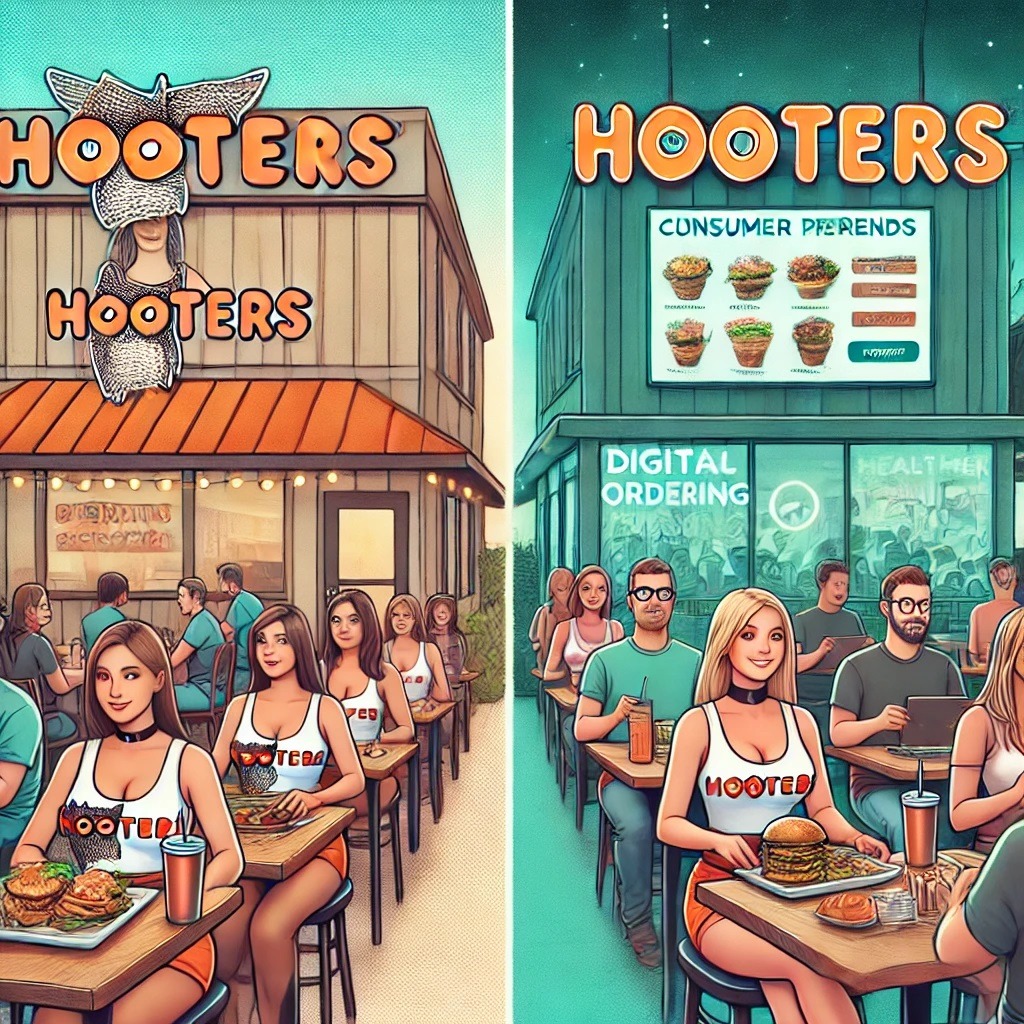The Rise and Fall of Hooters: Analyzing the Path to Bankruptcy
Hooters was once a dominant force in the casual dining industry, famous for its signature wings, beer, and the iconic uniforms of its waitstaff. Founded in 1983 in Clearwater, Florida, the brand quickly expanded across the United States and internationally, capitalizing on a unique niche in the market.
However, over the years, Hooters began facing challenges that eventually led to financial difficulties. Changing consumer preferences, increasing competition, and shifts in societal attitudes toward its business model all played a role. While Hooters once thrived on its novelty and brand identity, it failed to innovate and adapt to changing times, which contributed to its struggles and eventual bankruptcy.
Hooters’ Financial Woes: Declining Foot Traffic and Mounting Debts
One of the key reasons behind Hooters’ bankruptcy was the steady decline in foot traffic to its locations. Over the years, the brand has struggled to maintain its once-loyal customer base. Millennials and Gen Z consumers have shown less interest in dining experiences that focus on outdated branding and themes.
Additionally, rising operational costs, including rent, wages, and supply chain disruptions, made it difficult for Hooters to sustain profitability. The COVID-19 pandemic further exacerbated these financial woes, forcing many locations to shut down temporarily or close permanently, leading to accumulated debt and financial instability.
From Expansion to Contraction: How Market Shifts Led to Bankruptcy
In its heyday, Hooters aggressively expanded, opening hundreds of locations worldwide. However, rapid expansion without proper market analysis led to oversaturation. Several locations failed to perform well, resulting in closures and financial losses.
Additionally, consumer dining habits shifted towards healthier options and fast-casual dining experiences. Hooters failed to evolve its menu and appeal to a wider audience, further driving customers away. As a result, the company struggled to maintain revenues, leading to financial distress and bankruptcy proceedings.
Competitors on the Rise: The Impact of Rival Chains on Hooters’ Market Share
Over the years, the casual dining industry has become highly competitive, with several brands offering similar or superior experiences. Chains like Twin Peaks, Buffalo Wild Wings, and sports bars offering a more modern atmosphere and diverse menus attracted customers who might have once chosen Hooters.
Moreover, many sports bars and restaurants have introduced enhanced viewing experiences, high-quality food, and craft beer selections, making them more appealing alternatives. The lack of innovation at Hooters made it difficult for the chain to retain customers in a rapidly changing restaurant landscape.
Economic Pressures and Changing Tastes: Factors Behind Hooters’ Bankruptcy Filing
Economic downturns, rising operational costs, and inflation all contributed to Hooters’ financial troubles. Increased labor costs, higher lease expenses, and fluctuating ingredient prices added significant strain to the company’s finances.
Additionally, shifting social attitudes toward gender representation and inclusivity caused some customers to turn away from the brand’s outdated image. Younger generations prioritize different dining experiences, focusing more on food quality, ambiance, and inclusivity rather than novelty themes.
Hooters’ Strategic Missteps: Lessons from a Failing Restaurant Chain
Hooters’ failure to adapt to market trends was one of its biggest downfalls. While competitors diversified their menus and modernized their branding, Hooters largely stuck to its original concept without making significant updates. The failure to appeal to health-conscious diners, lack of technological advancements like mobile ordering and delivery services, and limited innovation in customer engagement all played a role in its decline.
The brand’s reluctance to rebrand in a way that aligned with modern values also contributed to its struggles. While other chains embraced evolving cultural norms, Hooters’ reliance on outdated marketing strategies alienated a significant portion of potential customers.
The Future of ‘Breastaurants’: What Hooters’ Bankruptcy Means for the Industry
The bankruptcy of Hooters raises questions about the future of the so-called “breastaurant” industry. As consumer preferences shift towards more inclusive and modern dining experiences, traditional themes like Hooters may struggle to remain relevant.
However, some competitors, like Twin Peaks, have successfully modernized their approach, focusing on high-quality food and a broader appeal. If Hooters hopes to make a comeback, it will need to revamp its brand, introduce a more diverse menu, and modernize its overall dining experience.
Financial Restructuring in the Casual Dining Sector: The Case of Hooters
Bankruptcy doesn’t always mean the end of a company. In many cases, businesses file for bankruptcy to restructure debts and reorganize their operations. If Hooters undergoes a financial restructuring, it could emerge as a leaner and more efficient business with a stronger focus on profitability.
This could involve closing underperforming locations, renegotiating leases, streamlining operations, and investing in digital ordering and delivery services. A successful restructuring could give Hooters a second chance to reinvent itself and appeal to a broader audience.
Hooters’ Bankruptcy in Context: A Look at Industry-Wide Challenges
Hooters’ financial struggles are not unique. Many casual dining chains have faced similar challenges due to changing consumer behaviors and economic pressures. Restaurants like Applebee’s, Ruby Tuesday, and TGI Fridays have also struggled to maintain relevance in an increasingly competitive industry.
The casual dining sector is undergoing a transformation, with an emphasis on convenience, healthier menus, and digital integration. Brands that fail to adapt to these trends risk suffering the same fate as Hooters.
Navigating Financial Turbulence: Hooters’ Journey Through Bankruptcy Proceedings
As Hooters navigates bankruptcy, the key question remains: Can the brand reinvent itself and stay relevant in today’s market? A successful turnaround will require a strategic overhaul, including a fresh brand image, menu revamps, and embracing digital transformation.
The restaurant industry is evolving, and only those willing to adapt will survive. Whether Hooters can rise from its financial troubles or fade into history will depend on its ability to make bold, necessary changes in an increasingly demanding market.
Conclusion
Hooters’ bankruptcy is a cautionary tale for businesses that fail to adapt to changing consumer preferences. While the brand once thrived on a unique concept, its reluctance to evolve contributed to its decline. Whether through restructuring or a complete brand transformation, Hooters will need to innovate if it hopes to regain relevance in an ever-evolving dining landscape.






